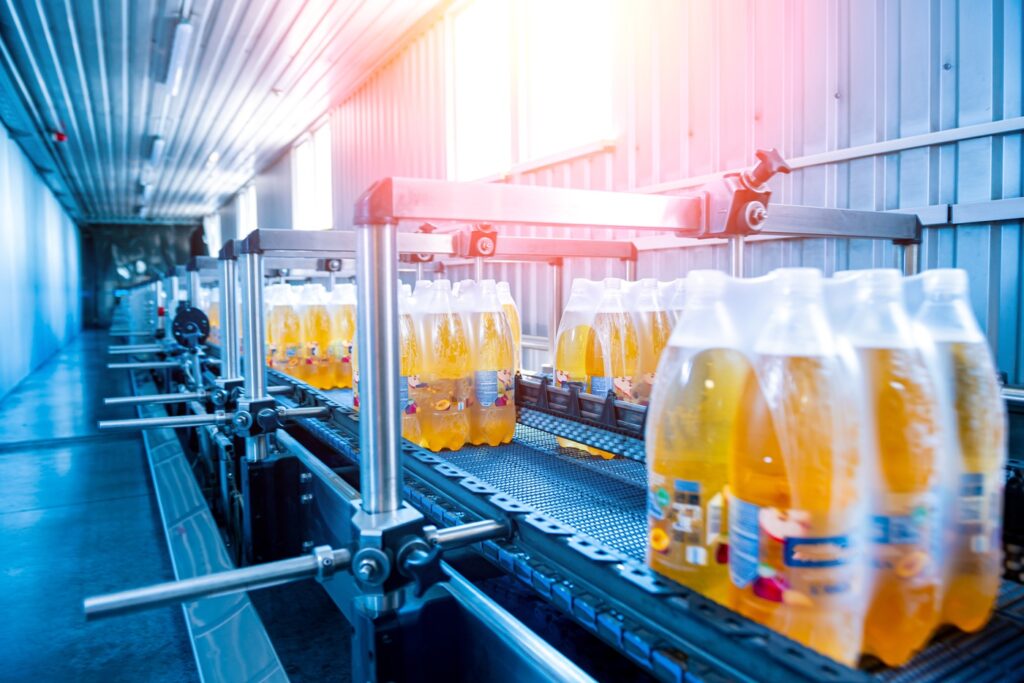The end of the production line has become the new front line for compliance and cost control. With Extended Producer Responsibility (EPR) and the Plastic Packaging Tax reshaping the economics of packaging, automation is evolving fast—becoming smarter, leaner, and central to long-term profitability.
Where Efficiency Meets Liability
For UK food and beverage manufacturers, the final metres of a production line now carry the heaviest financial weight. Under Extended Producer Responsibility (EPR), businesses are directly taxed based on the weight and recyclability of their packaging. Every gram counts—both in material cost and compliance fees.
Modern end-of-line systems are no longer judged solely by output speed, but by how efficiently they help manufacturers meet sustainability goals and legal requirements. Robotics, AI-driven inspection, and digital simulation are redefining how products are packed, coded, and palletised, turning the back of the factory into a key strategic asset.

Regulation Driving Innovation
The new EPR regime is the most significant packaging reform in decades. Producers now pay variable fees according to material recyclability and recovery rates, making lightweighting and mono-material packaging financially essential. Case packers and palletisers must now handle thinner, lighter, and sometimes more fragile materials—demanding new precision and intelligence.
The Plastic Packaging Tax (PPT) continues to apply a levy on plastic packaging with less than 30% recycled content. Many legacy machines struggle with the variability of recycled materials, so manufacturers are upgrading to systems with tighter process control, adaptive pressure settings, and better film management to avoid costly downtime and waste.
Meanwhile, the EU Deforestation Regulation (EUDR) is creating a new link between traceability and end-of-line coding. Food and beverage exporters must provide verifiable data on product origin, and the final packaging stage is where that data becomes visible—via barcodes, QR codes, or smart labels that connect a product to its digital record.

Technology at the Core
Today’s end-of-line systems combine robotics, sensors, and AI to deliver agility and assurance in one package.
- AI-Powered Vision Systems now perform comprehensive quality checks in milliseconds—verifying orientation, labels, and seals; ensuring retail-ready cases are perfectly folded; and reading every barcode to create an exact digital record of contents.
- Cobots (Collaborative Robots) are filling labour gaps, handling palletising tasks alongside human operators. Compact and cage-free, they can adapt quickly to new products or stacking patterns, maximising truck space and throughput.
- Digital Twins are enabling manufacturers to simulate packaging line changes before they happen. By creating a virtual replica of the system, engineers can test lighter case formats, reprogram robotic motion, and train operators in a no-risk digital environment—cutting project costs and accelerating commissioning.
These technologies turn the end-of-line from a reactive bottleneck into a predictive, data-driven function that safeguards compliance and enhances profitability.
Agility as a Competitive Advantage
The conversation has moved beyond flexibility. Today, agility defines success—the ability to adapt fast to shifting regulations, materials, and retailer demands. Modular automation systems with quick-change tooling and intelligent control software allow manufacturers to switch SKUs in minutes, not hours.
That agility also has a commercial edge. A plant that can instantly accommodate a supermarket’s short-run promotional pack or a retailer’s new sustainability criteria has a decisive advantage in winning contracts and maintaining supply continuity.
The end of the line has, quite literally, become the start of opportunity.




